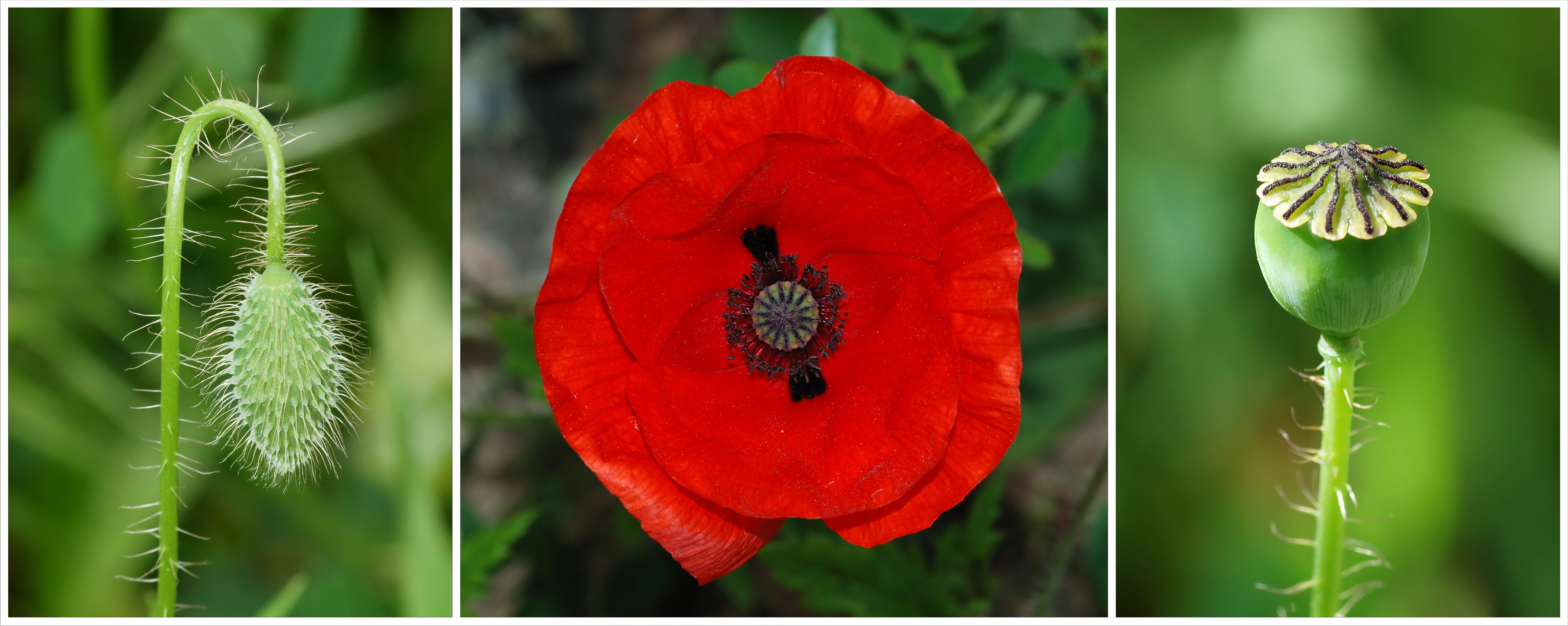Although I’ve met and friended folks who claim they’ve seen it, I’ve never witnessed a plant that could run. Instead, they engage in chemical warfare or communication. The chemicals are the result of multi-step metabolic networks that provide the chemical apparatus to change the staring material into a bioactive substance. Such a chain of chemical reactions is controlled by a series of proteins, called enzymes. Each protein is coded for by a gene.
This research identified a large cluster of 15 genes that encode enzymes in the metabolic pathway with morphine as an endpoint. Approximately 50 alkaloids are found in Opium poppy (Papaver somniferum), with morphine the largest in concentration.
According to the study, the pathway for the painkilling drugs evolved around 7.8 million years ago (mya). Primates are presumed to have appeared 63 mya, Hominidae (precursors to modern humans) 15 mya, and humans 1.3-1.8 mya. First recorded humans use appears in 5000 BCE in the Neolithic age. The PBS show Frontline provides a timeline of human use. It’s history shows that Morphine has been a “wonder” drug for pain, and a bane for those addicted to it and it’s derivatives
The mechanism responsible for euphoria also kills. Morphine binds to receptors in the brain, inhibiting neurotransmitter release and resulting in among other physiological changes, pain relief, but also slowed breathing. Overdose victims often stop breathing.
Since the plant has been around for quite some time, I wondered if there were any histories to show animals consuming this or other plants to reduce pain or to give pleasure? A brief review showed the following:
- Researchers discovered it was chili peppers. Next, they studied tree shrews in the wild and discovered they ate one particular pepper, the Piper boehmeriaefolium, and actually preferred to eat it over other plants and vegetation.
- Scientific Reports provides evidence that Borneo based apes chew leaves of the Dracaena cantleyi plant to create a white lather, which they then rub onto to their bodies
- A study of chimps found that they roll Aspilia leaves for a period of time (they are very bitter to chew). This plant material contain thiarubine A , which kills harmful bacteria, and fungi because they contain thiarubine A, a powerful antibiotic. Research also suggests these leaves act as a stimulant, since chimps ingest them first thing in the morning.
What’s more compelling is the rich association of the opium poppy with war. with a few examples below. One aftermath of each – the trail of addiction that followed either the imposition of trade or the use of morphine on the battlefield to reduce pain from horrible damage.
- During the 18th century, forcibly exported opium to China, even while it was banned in Britain because the government and industry knew it was not good for the populace in general. It took two opium wars, eventually disrupting the country and leading to the collapse of the Qing Dynasty.
- After World War I in remembrance of the fallen soldiers, the living commemorate the sight of thousands of blood-red poppies appearing on the battle-scarred fields of Flanders, in Northern France.
- US wars in Vietnam and Afghanistan have been greatly affected by opium production supporting the opposing militaries ability to pay for the fighting.
Now America is facing a public health crisis of opioid addiction. In an interesting turn, last November, President Donald Trump asked Chinese President Xi Jinping to help stop the “flood of cheap and deadly” fentanyl from China into the United States. Fentanyl is a synthetic opioid, 50 to 100 times stronger than morphine.
For better or worse, this is an example of co-evolution – humans identifying and applying a plant to alleviate the pain they, themselves create.